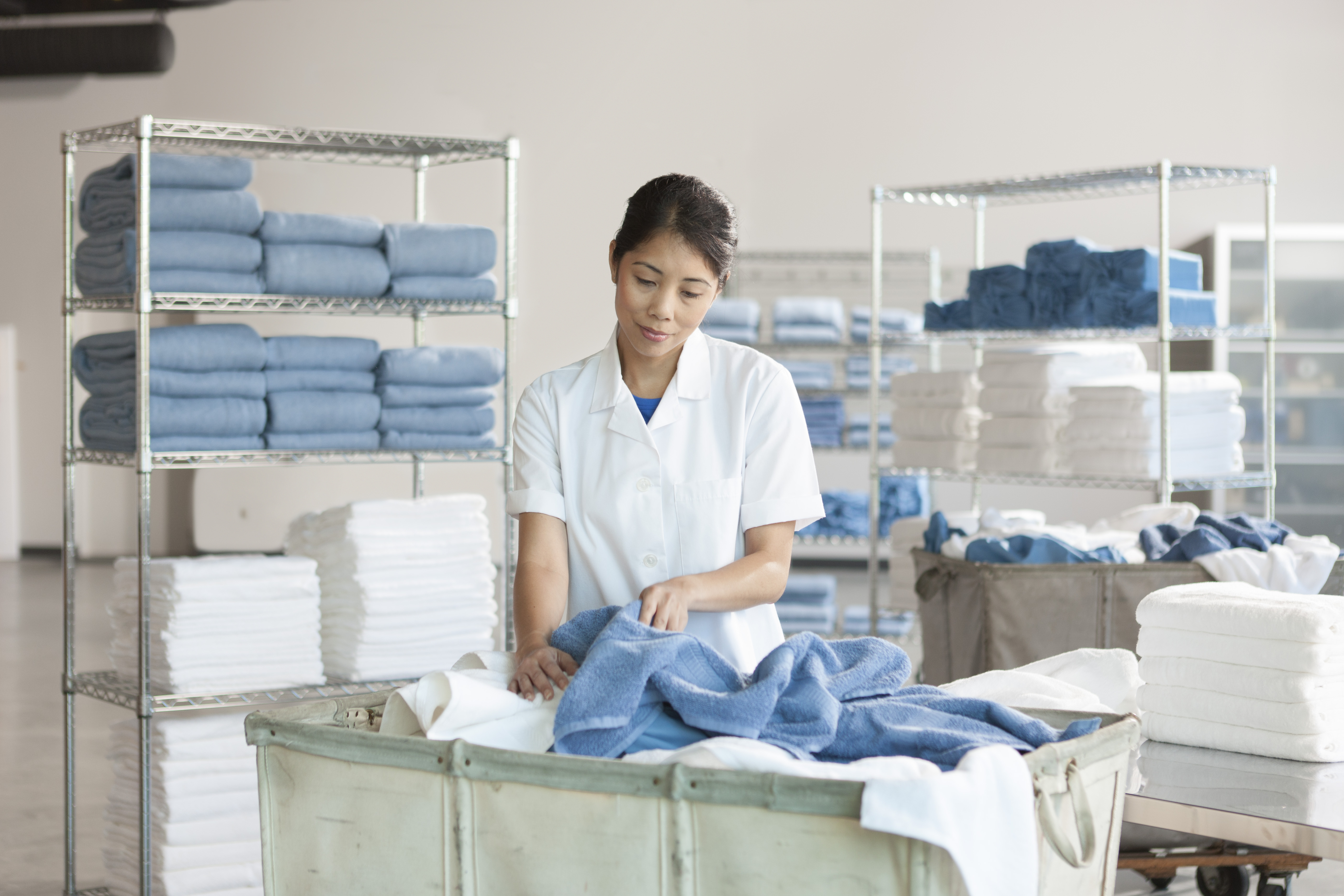
Rick Murphy, Sales Manager, Whirlpool Corp. Commercial Laundry
Last week, in Part 1 of this article, we discussed how to select energy-efficient equipment and preventative maintenance tasks that assist in maximizing your laundry’s wash and dry processes.
Today we’ll conclude by looking at the best types of machines to consider that will allow your laundry to reach maximum efficiency.
Room and Staff Efficiency
Knowing how many hours equipment will operate daily—in reference to the number of and types of linens laundered, etc.—can help determine where larger or smaller equipment will ensure a smoother, more efficient laundry operation. Looking at hotels, a general rule of thumb is to allow one pound of washer capacity for each room. For example, if a hotel has 100 rooms, it would need 100 pounds of washer capacity. This step is often called the “right-sizing.” And while that may seem overwhelming, owners and operators are not alone in this effort. Partnering with a reliable and reputable distributor can make this task easy.
Want to know another thing manufacturers and distributors can help with? Designing the layout of a laundry facility. This is addressed by positioning equipment and tables in an efficient way to allow for easy movement of staff and laundry—regardless of the amount of square footage. Obviously, washers and dryers that handle bigger loads require a larger footprint, but typically, two larger-capacity washers will occupy less floor space than three smaller-capacity washers.
Designing a well laid out space with clearly defined areas helps to ensure the effectiveness of the staff’s time and efforts. For example, have a wide swinging door to easily accommodate in-and-out foot traffic and place stations, such as a separating table near the washers and a folding table near dryers, to flatter operational flow.
In addition, it’s important to properly train staff and ensure all employees have the knowledge to use laundry equipment appropriately. As part of that, there should be a documented cleaning and maintenance schedule clearly posted throughout the room. High visibility of this “check list” will encourage employees to be more cognizant and stringent about cleaning and serves as a friendly reminder that specific tasks must be accomplished. One employee per shift should be accountable for ensuring the tasks are performed completely and properly.
Finally, to help eliminate potential mistakes, take the guesswork out for employees. Did you know $.50 of every dollar spent on a laundry operation goes towards labor? Owners and operators can increase staff efficiencies and reduce the overall laundry spend by implementing easy-to-follow instructions with simple, one-touch, pre-programmed cycle selections for a variety of load types. Easy-to-read graphic displays, cycle countdown and multilingual readouts are additional options that can help streamline the operation of equipment for all staff, also contributing to less training time for new employees.
Conclusion
In order for more loads to be completed in a shorter amount of time, and reduce energy and water usage while doing so, it’s important to properly care for high-efficiency equipment. This will directly contribute to reduced labor and training, and utility and repair costs. Simply put: ditch that old way of thinking about laundry. For a facility to succeed in the hospitality industry, invest in quality, technology-driven washers and dryers, and design the laundry room in a way that will compliment foot traffic and staff responsibilities. Your bottom line will thank you.
Photo Credit: Whirlpool Corp. Commercial Laundry
# # #
Rick Murphy is sales manager for Whirlpool Corporation Commercial Laundry, representing Maytag® Commercial Laundry, ADC and Whirlpool® Commercial Laundry














